The Popularity of Cthulhu in Anime (and Hentai)
“Who should I pray to? Christ? Buddha? Muhammad? Zoroaster? Mani? Lovecraft?”
— Kyon (The Disappearance of Haruhi Suzumiya)
One subject I write a lot about is memes and the way they are rarely universal in all countries, often being limited to one linguistic sphere of the web. We’re all familiar with “Netflix and chill” or the meme of eating Tide Pods, but these concepts are totally unknown in Japan, just as there are many phrases that become popular in Japan that are unfamiliar to us, like bakkater, which is to do a stupid thing and post it to Twitter. In the past, I’ve compared this tendency for memes to exist in separate spheres to the Uplift books by David Brin, which details a universe teeming with space-faring civilizations, some oxygen-based living on Earth-like planets, others hydrogen-based, living inside gas giants or stars, both with completely separate spheres of existence. A few memes do manage to get traction in both the English and Japanese interwebs — the cult of Bob Ross for example — but by and large it’s hard for memes to travel across linguistic lines, in the same way as oxygen- and hydrogen-based life forms can’t interact.
Another exception has been the works of H.P. Lovecraft, which have always been well represented in Japanese pop culture, and it’s interesting to examine the role of Cthulhu in anime and related popular culture. I remember watching the 80s classic Tatakae!! Iczer-1, which introduced me to the horrific Cthulhu Mythos as well as anime lesbians in one fell swoop. Cthulhu Mythos themes show up directly or indirectly in many anime series, for example, The Big O, A Certain Magical Index, Persona 2, Digimon Tamers, and of course Haiyore! Nyaruko-san, in which the Great Old One Nyarlathotep becomes a high school girl and makes endless sexual jokes. Cthulhu and anime go pretty well together.
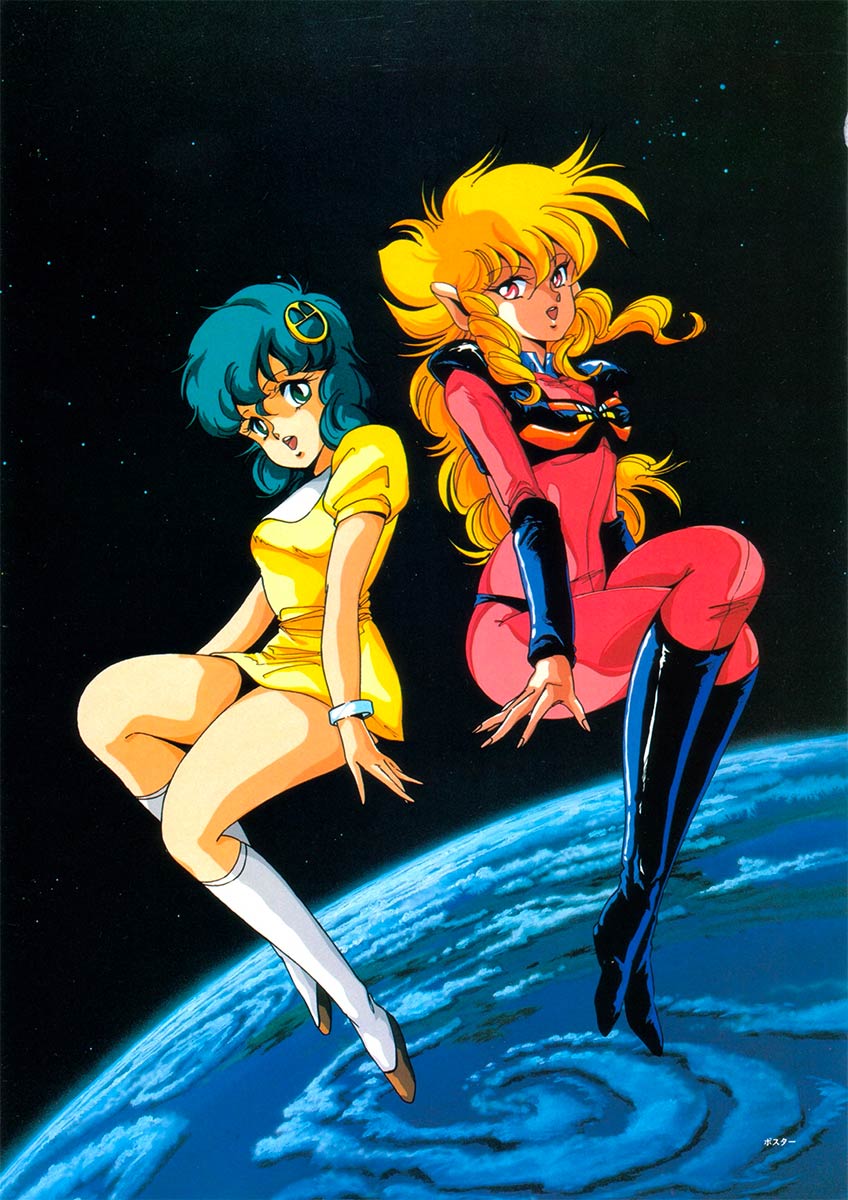
The works of Lovecraft started being translated into Japanese with The Music of Erich Zann, which ran in a magazine of mystery and horror called Houseki in 1955. Popularity grew slowly, then jumped in a big way with Hobby Japan’s licensing and translating of the Call of Cthulhu tabletop RPG in 1981. (Interestingly, the Japanese call these games “table-talk RPGs” which I find extremely cute.) Lovecraftian references continued increasing in novels, anime, and other forms of popular culture as a form of general subculture, not unlike what anime used to be back in the 80s before going mainstream.
The Lovecraft-Hentai Connection
One company J-List and JAST USA have worked closely with is Nitroplus, the creative company responsible for developing some of the most deliciously dark visual novels and anime series to come out of Japan, including Phantom of Inferno, Jingai Makyo, Sumaga, Hanachirasu, and Full Metal Daemon: Muramasa. With other companies, they’ve also created Steins;Gate, Chaos;Head, and the legendary Touken Ranbu game series. They also publish the darkest and most amazing boy’s love titles, which we’ll be bringing out in English.
We don’t only see Cthulhu in anime, but in games too. Nitroplus is also a company that has embraced H.P. Lovecraft’s themes and woven them into two adult visual novels, creating a strong Lovecraft-Hentai connection that appeals to many fans, which have become an important step in the growth of Cthulhu in anime. Let’s take a look at their two main Lovecraftian-themed titles.
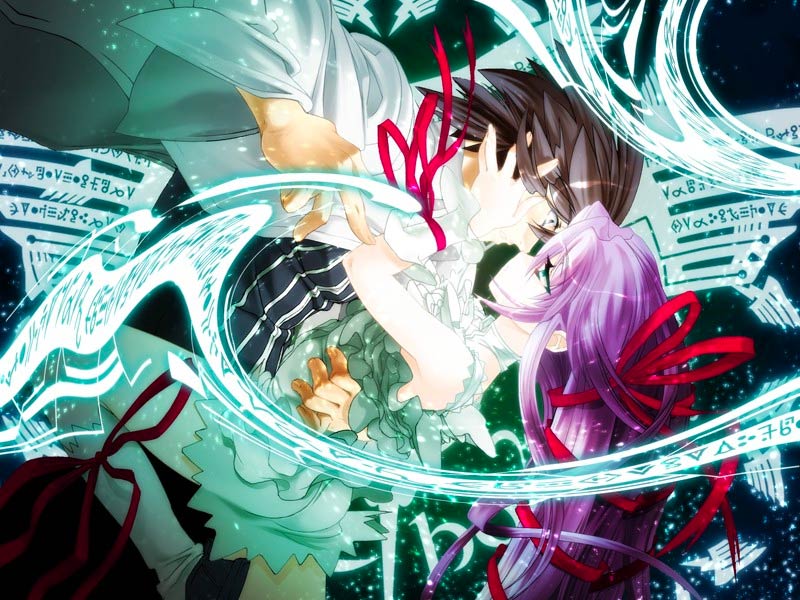
Deus Machina Demonbane
First is Demonbane, a gorgeous visual novel (and mediocre anime, which Nitroplus hates because they had no control over its creation, so don’t watch it) that is packed full of characters and references to the Cthulhu Mythos. It follows the story of a poor detective named Kurou Daijuuji, living in Arkham city, who is hired to find a certain magical book. He runs into the ridiculously sexy Al-Azif, who is the physical embodiment of Lovecraft’s Necronomicon, a powerful grimoire.
The game is great because it ties so many wonderful things together. An epic story with cosmic scale. A giant robot called Demonbane. A sexy supernatural sidekick. A long and well-developed story. And some of the most beautiful art you’ve ever seen.
Demonbane represents a lighter version of the Cthulhu Mythos, where courage and the power of love can hold even the greatest evils at bay (though not without sacrifice). This is in stark contrast to our next title, the acclaimed Saya no Uta (below).
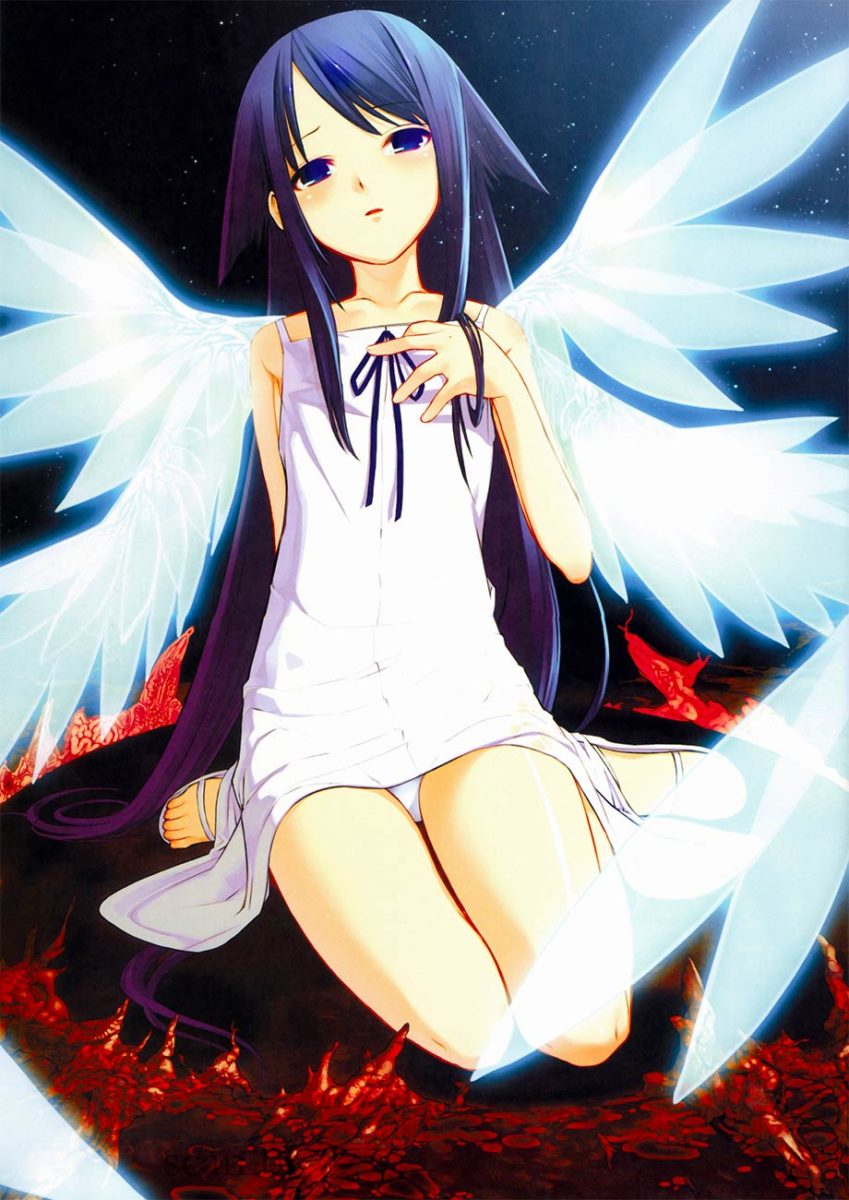
Song of Saya
The other dark Lovecraftian visual novel by Nitroplus is Saya no Uta. The story focuses on Fuminori Sakisaka, a medical student whose life is changed forever by a car accident which kills his parents and damages his brain. After the accident, he perceives the world as a gory place of blood and viscera, and every person in it as a horrible monster. Except for one girl, whose name is Saya: she appears innocent and beautiful in Fuminori’s eyes. What is the terrible secret of this girl and what she represents?
Saya no Uta is a compelling story that combines supernatural romance with cosmic horror. In true Lovecraftian fashion, it paints a picture of forces beyond human comprehension. Even a glimpse of the Universe’s true face is enough to drive the strongest insane. With only three routes, Saya is shorter than most VNs, but this makes for an intensely focused experience that stays with you long after it’s over. Because it’s written by Gen Urobuchi, who went on to create Madoka Magica, Fate:Zero, Psycho-Pass and many other acclaimed works, it’s something many fans will definitely want to play.
Conclusion
It’s fun to study the rise of Cthulhu in anime (and hentai) and see how Lovecraft’s works have influenced our beloved anime and games. Let’s hope we see more inclusion of dark Lovecraftian themes in anime and games in the future!


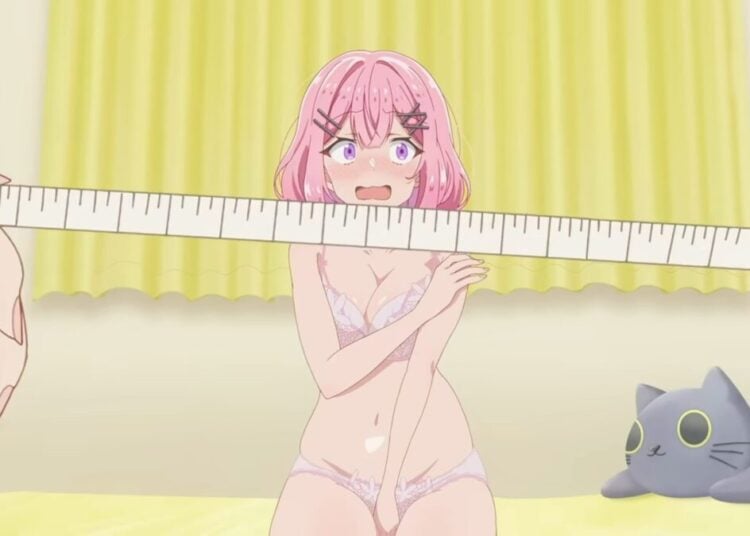
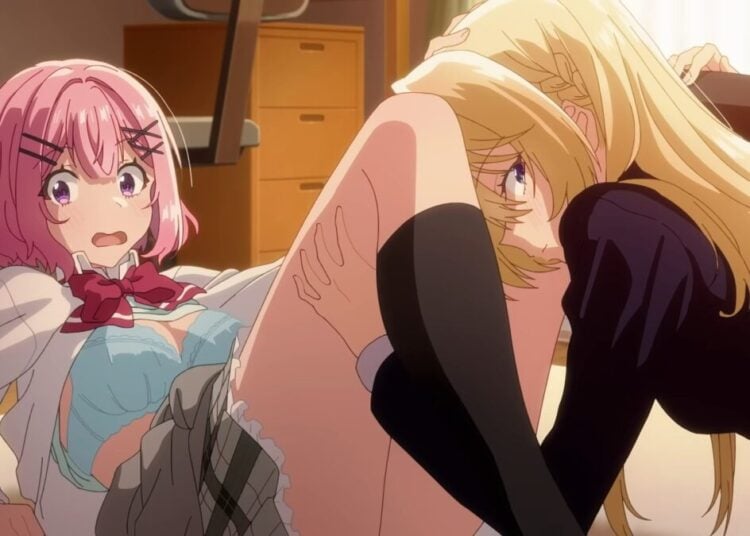
![Sawaranaide Kotesashi Kun Episode 12 [END] Featured Image](https://blog.jlist.com/wp-content/uploads/2025/12/Sawaranaide-Kotesashi-kun-Episode-12-END-Featured-Image-120x86.jpg)









